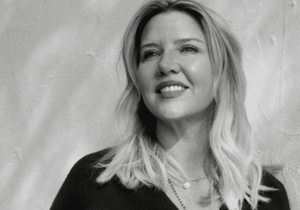Being A Stand for Peace
What Does It Mean to Be a Stand for Peace?
To be a stand for peace is to embody the change we wish to see rippling through our families, communities, and world. It is not a passive hope for harmony, but an active practice of becoming peace in our daily lives.
Peace as an Internal Practice
Being a stand for peace begins within. It means cultivating the capacity to pause between stimulus and response, to breathe into our triggered places rather than react from them. When someone cuts us off in traffic, when our teenager rolls their eyes, when our partner forgets something important, we practice.
Peace is not the absence of conflict, but the presence of love even in the midst of difficulty. It's learning to hold space for all emotions (ours and others') without needing to fix, change, or control. It's developing what spiritual teachers call "equanimity", or a steady heart that can remain open even when life feels chaotic.
Peace in Relationship
In our families, being a stand for peace means choosing curiosity over judgment. Instead of asking "What's wrong with you?" we learn to ask "What do you need right now?" We practice seeing the hurt beneath the anger, the fear beneath the defensiveness.
It means taking responsibility for our own emotional weather while refusing to take responsibility for others'. We can offer our steady presence without losing ourselves in others' storms. We become skilled at repair, at knowing how to return to connection after conflict, how to apologize with integrity, how to forgive without bypassing our own needs.
The Ripple Effect
When we are truly a stand for peace, it becomes contagious. Our nervous system regulation helps regulate others. Our willingness to stay present in difficult conversations gives others permission to be vulnerable. Our commitment to seeing the goodness in people helps them remember their own goodness.
Children especially need adults who embody peace. Not perfection—they need to see us stumble and recover, mess up and make amends. They need to witness what it looks like to choose love over fear, collaboration over control, curiosity over certainty.
Peace as Courage
Make no mistake—being a stand for peace requires tremendous courage. It means standing firm in our values while remaining soft in our hearts. It means speaking truth without violence, setting boundaries without walls, holding people accountable without shaming them.
Sometimes being a stand for peace means having difficult conversations that others avoid. Sometimes it means refusing to participate in gossip, blame, or us-versus-them thinking. Sometimes it means stepping into conflict rather than away from it, but stepping in with love as our guide.
The Daily Practice
Being a stand for peace is not a destination but a practice. It requires learning specific skills and committing to concrete actions:
Learn Nonviolent Communication (NVC)
Study Marshall Rosenberg's framework of observations without evaluations, expressing feelings and needs, and making specific requests. Practice replacing "You always..." with "When I see... I feel... because I need... Would you be willing to...?" This literally rewires how we handle conflict.
Manage Your Own Emotions and Reactions
-
Develop nervous system regulation techniques: breathing, grounding, self-soothing
-
Create space between trigger and response
-
Practice emotional literacy—naming what you feel and what you need
-
Take responsibility for your own emotional weather without taking on others'
Don't Support Violence
-
Question punitive approaches in parenting, education, and justice
-
Refuse to participate in gossip, blame, or us-versus-them thinking
-
Examine the thousand small ways we normalize harm in daily life
-
Choose collaboration over control, curiosity over certainty
Draw Loved Ones Away from Violence Through Better Alternatives
-
Model the peace you want to see instead of shaming others out of violent patterns
-
Make nonviolence more attractive by demonstrating how good healthy relationships feel
-
Create spaces where people experience connection and cooperation
-
Offer empathy and understanding to help others feel seen and valued
"Catch Them Being Good"
-
Notice and appreciate moments of kindness, cooperation, and peace-making
-
Give attention to what you want to grow—what we focus on expands
-
Celebrate small steps toward peace in yourself and others
-
Practice daily appreciations with family members
Build Family Peace Systems
-
Hold weekly family meetings using NVC principles
-
Create predictable rhythms and routines that help everyone feel secure
-
Practice conflict as curriculum—seeing disagreements as opportunities to learn
-
Establish repair rituals when harm occurs in the family
-
Share power appropriately, giving children voice and choice
-
Align your approach with schools and community to reinforce peaceful practices
These practices show up in the small moments: choosing to listen instead of preparing our rebuttal, taking a breath before responding to our child's meltdown, asking "How can I help?" instead of "Why did you do that?" It means becoming fluent in the language of feelings and needs, skilled in the art of repair, committed to seeing the humanity in everyone—especially those who challenge us most.
The Invitation
The world desperately needs people willing to be stands for peace. Not because we have it all figured out, but because we're willing to keep practicing. Because we believe that transformation is possible, that love is stronger than fear, that connection is our birthright.
Every time we choose peace over reactivity, we cast a vote for the kind of world we want our children to inherit. Every family conversation held with respect, every conflict resolved with care, every moment we choose love—these are the building blocks of a more peaceful world.
The question is not whether you're perfect at peace. The question is: Are you willing to be a stand for it? Are you willing to let your life become a laboratory of love, a demonstration that another way is possible?






















